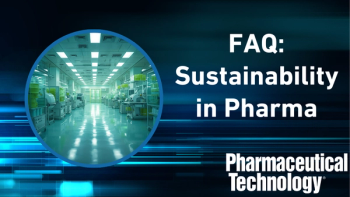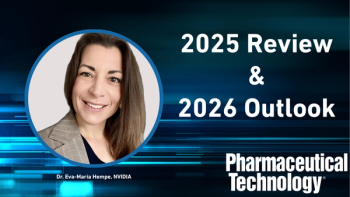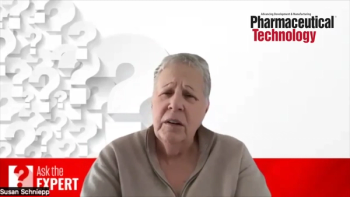- Trends in Formulation October 2025 eBook
- Volume 49
Why Radiopharmaceuticals Are Ideal for Treating Cancer
Key Takeaways
- Radiopharmaceuticals target cancer cells, reducing side effects, and are enhanced by antibody-drug conjugates for precise delivery.
- FDA guidance stresses understanding pharmacodynamics, toxicity, and dosimetry in radiopharmaceutical clinical trials.
Michael Ritchie, chief commercial officer at Champions Oncology, explains what makes radiopharmaceuticals unique in the treatment of cancer.
Radiopharmaceuticals have seen a surge in research and clinical trials as a treatment for cancer due to their ability to target specific cancer cells. Studies suggest that targeted radiation therapy may reduce the risk of side effects, according to the National Cancer Institute at the National Institutes for Health (1).
“Radiopharmaceuticals also work best when the drugs can get inside cells. But that’s not necessary for them to be effective. Once a radiopharmaceutical has stuck to a cancer cell, the radioactive compound naturally breaks down. This decay releases energy that damages the DNA of nearby cells. And when a cell’s DNA is irreparably damaged, that cell dies. Cancer cells are particularly sensitive to radiation-induced DNA damage” (1).
Pharmaceutical Technology® spoke with
Ritchie
PharmTech: What is unique about the use of radiopharmaceuticals to treat cancer?
Ritchie (Champions Oncology): Actually, radio pharmaceuticals have been around for the past 100 years or so. They were used early on to treat more superficial tumors [such as] melanoma and using large machines to direct focused radiation to the tumors. And as that technology evolved, we were able to treat more internal tumors.
So, it’s been around for a very long time, but we’re in the middle of a transformation right now in radiopharmaceuticals, and much of that is owed to a field called antibody-drug conjugates [ADCs]. [ADCs] have been around for quite a while. That’s that magic bullet idea that you can take a chemotherapeutic or something that’s otherwise very toxic to every cell in a patient and direct that to the tumor, specifically, so that you impact only the tumor and nothing else. The first of those drugs was approved in 2000. It’s a drug called Mylotarg, and it really took us 25 years to have a good understanding of what makes a good ADC. Where can they be effective? From a therapeutic point of view, what do we need to do to make this drug long lasting in the patient?
Now we have [seen] really strong, durable responses in patients with ADCs. Now that we have a good understanding of that, we can take these radio ligands, which essentially [are] an element on the periodic table that introduces radiation in a focused way, and we can conjugate that to an antibody in the same way that these ADCs work. And so, with the advent of success in ADCs, we now have radio drug conjugates, and we’re starting to see people employ radio ligands in a similar way to a chemotherapeutic and direct it to a patient administered systemically. It’s really an exciting period, because it’s a new mechanism of action where we can potentially tackle unmet needs.
PharmTech: What are some of the specific challenges associated with the development of radiopharmaceuticals?
Ritchie (Champions Oncology): There [are] real challenges across the board. There are therapeutic development challenges as well as the biology of treating these tumors. From a therapeutic development perspective, we’re still in our infancy as far as what we understand makes a good drug.
There’s so much [put] into pharmaceutical development [to make] something that can be manufactured at scale. It can sit on a shelf for a while. We can administer it to a patient, and it behaves in the way that we want. All of that chemistry, all of that biologics development, we’re just learning how to apply what we learn from ADCs into radio drug conjugates, so the chemistry of how to link this radio ligand to an antibody, [is] something that will continue to evolve, and there’s a real opportunity there to improve the therapeutic activity.
From the biology perspective, again, we’re in our infancy and understanding [of] what are the tumor types or the molecular cohorts within a tumor that are more sensitive to radio ligands. Like any chemotherapy or any therapy, certain tumors will respond. Others will not. They’ll develop resistance. And so really understanding the right cohorts of patients to treat is something that we’re still learning, and I think we’ll continue to learn as the clinical development of these programs evolves.
PharmTech: Can you please explain how clinically annotated patient-derived xenograft (PDX) models are used in radiopharmaceutical testing?
Ritchie (Champions Oncology): PDXs are used from a couple different perspectives in radiopharma testing. It really comes back to that second hurdle that we need to overcome in understanding what tumor types or molecular cohorts respond. It’s really important that you do your drug testing and models that represent the tumors that your drugs [are] going to be up against in the clinic. Patients tend to be heavily pretreated. When they take an experimental medicine, their tumor has metastasized to multiple organs, and those are, unfortunately, the lesions that ultimately kill the tumor. Those are the lesions you need your drug to combat effectively. And so, using models that are representative of that biology are key. We simulate clinical trials in animals where we will take our tumor bank, we’ll grow them in animals, and then you’ll test your drug across a broad library of tumor[s] [that] simulate that clinical trial. Then, when you see where you have an effect and where you do not have an effect, we’ll look deeply at the molecular nature of these tumors and try to predict in the clinic which patients should receive the drug because they’re most likely to benefit versus those that are likely to benefit from a different type of therapy.
PharmTech: Why is it important to use real-world data in this type of testing?
Ritchie (Champions Oncology): Real-world data are a real important data set, and they’ve been around for a while. And the way I think of real-world data is, is there information on patients? What’s the stage of their tumor, the metastatic nature of it? What were they treated with? How did they respond?
That’s a very important layer. But I think there’s another side to the coin that we really need to think about, and that is, what’s the molecular nature of the tumors associated with that patient? What makes those tumors tick? What are the vulnerabilities and the liabilities within those tumors that you could potentially exploit in therapeutic development? I think Champions is actually one of the unique companies that have both of those sides of the coin. We have a large data set of real-world evidence linked to very deep molecular data of the tumor, whole cell exome sequencing, RNA [sequencing], proteomics, phospholipids, cell surface proteomics. This really allows researchers to dive deep [and] understand molecular characteristics of the tumors that potentially impact survival [and] impacts resistance to the therapeutic. It just gives them real insight early on [about] how to design their clinical trials. As companies come to Champions and they simulate these clinical trials, they utilize these data for prediction purposes and for driving greater insights.
PharmTech: How does FDA’s new draft guidance on identifying dosages for clinical trials of oncology radiopharmaceuticals impact the development and approval of these treatments?
Ritchie (Champions Oncology): Classical radiopharma relied on something called EBRT, or external beam radiotherapy, and that is essentially delivering a radio beam to the patient from an external source. But we’re now looking at a new wave of therapies which are injected systemically, and quite frankly, we just don’t know enough about them. And so, FDA has released new guidance that has said, ‘Hey, we want you to come to the table with a better understanding of pharmacodynamics potential liabilities from a toxicity perspective, therapeutic window. But we also want you to design your clinical trials in such a way that we can get an idea on dosimetry. We can get a good idea on toxicity from an acute perspective, but we want you to monitor these patients for a longer period of time to look for more chronic toxicities that could arise. And we want you to try different therapeutic doses, different therapeutic schedules. We really want you to throw quite a lot at this, so that if we consider approving these, we have a better understanding, or the best understanding, of what these patients are receiving’.
PharmTech: What are some of the challenges involved with clinical trials for radiopharmaceuticals to treat cancer?
Ritchie (Champions Oncology): I think there’s both scientific and logistic challenges here. From the scientific side, we really just don’t know what we don’t know. These haven’t been around for very long, so we’re really unaware of the tumor types that respond to these types of therapies. We’re unaware of the types of toxicities.
If you think about ADCs, which are kind of a second cousin to these therapies, after more than two decades of research, we have a really good understanding of what organ types are. You can easily sustain those types of therapies, and we know how to manage the patient care for different classes. For [radiopharmaceuticals], we just, we just don’t know. And so that creates a challenge. We also really don’t understand, I think, quite yet, what makes the best possible radiotherapy from pharmaceutical sciences perspective.
From the drug development side, the logistics are very, very different. This is a highly regulated space. We’re dealing with nuclear medicine. The nucleotides themselves aren’t so readily available, so that brings challenges. And then obviously not every clinical site that will receive patients for a clinical trial is set up or equipped to offer this type of therapy, so patient enrollment can be a challenge.
And then finally, these nucleotides have a short half-life and a short shelf life. And so, it’s not like drugs can be manufactured and stuck in a refrigerator for months as they’re waiting to be used for a trial. They kind of have to be made and then used within a week, so there’s some logistical hurdles as well.
References
- NCI Staff. Radiopharmaceuticals: Radiation Therapy Enters the Molecular Age. National Cancer Institute. Cancer.gov. Oct. 26, 2020.
https://www.cancer.gov/news-events/cancer-currents-blog/2020/radiopharmaceuticals-cancer-radiation-therapy - FDA. Draft Guidance for Industry, Oncology Therapeutic Radiopharmaceuticals: Dosage Optimization During Clinical Development (OCE, CDER, August 2025).
https://www.fda.gov/regulatory-information/search-fda-guidance-documents/oncology-therapeutic-radiopharmaceuticals-dosage-optimization-during-clinical-development
About the author
Susan Haigney is lead editor for Pharmaceutical Technology®.
Article details
BioPharm International®/ Pharmaceutical Technology®/ Pharmaceutical Technology® Europe
Trends in Formulation eBook
October 2025
Pages: 12-18
Citation
When referring to this article, please cite it as Haigney, S. Why Radiopharmaceuticals Are Ideal for Treating Cancer. BioPharm International®/ Pharmaceutical Technology®/ Pharmaceutical Technology® Europe Trends in Formulation eBook 2025 October.
Articles in this issue
Newsletter
Get the essential updates shaping the future of pharma manufacturing and compliance—subscribe today to Pharmaceutical Technology and never miss a breakthrough.





